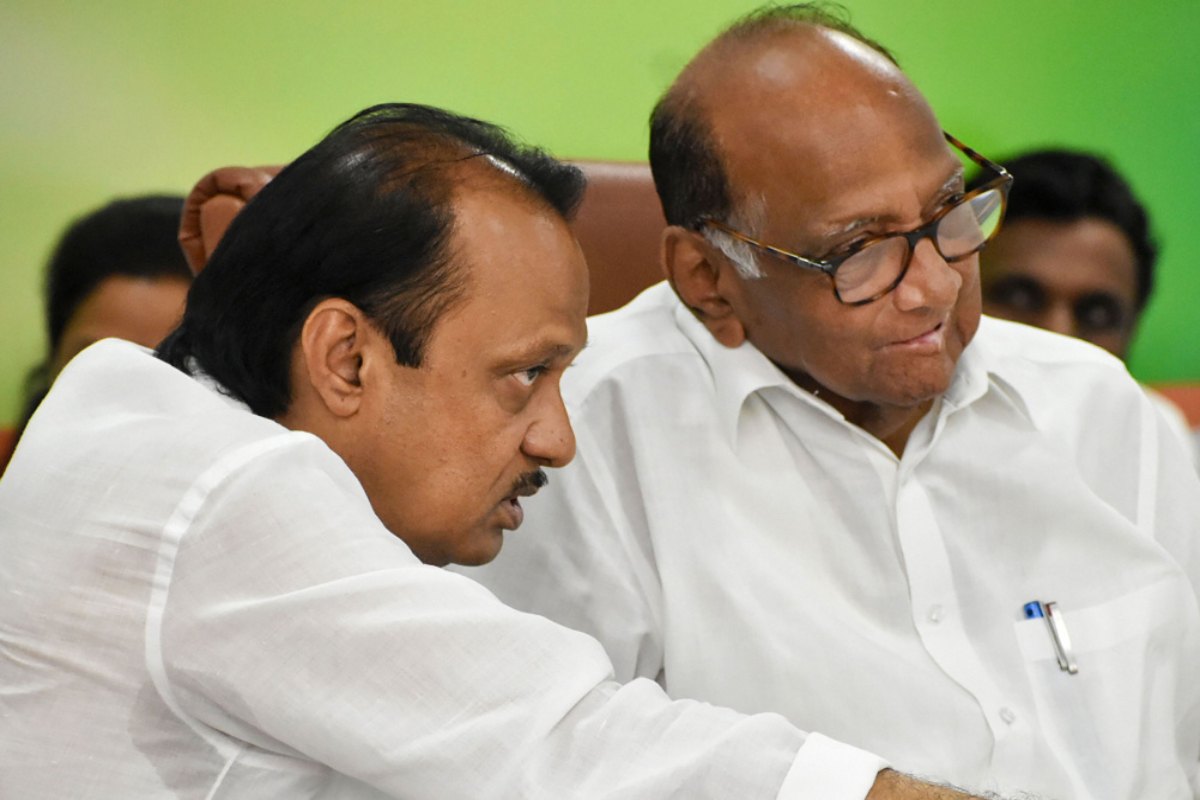INDIA needs Mamata’s leadership: Serampore MP
The BJP has taken the advantage of lack of proper coordination among the alliance partners of INDIA. A strong guiding leadership can well motivate the alliance partners to resist the BJP.
In the scorching heat of Maharashtra’s political arena, the western region of the state emerges as the battleground where alliances are forged, loyalties tested, and strategies deployed with surgical precision.

Sharad Pawar and his nephew Ajit Pawar. (File Photo)
In the scorching heat of Maharashtra’s political arena, the western region of the state emerges as the battleground where alliances are forged, loyalties tested, and strategies deployed with surgical precision. The recent developments in western Maharashtra underscore a political chess game where every move counts, and every player’s role is crucial. At the heart of this political theatre is the Maha Vikas Aghadi (MVA), a coalition of the Congress, the Nationalist Congress Party (NCP), and the Shiv Sena. Facing them is the formidable Mahayuti alliance led by the Bharatiya Janata Party (BJP) with its allies. The stakes are high, especially in western Maharashtra, a bastion traditionally held by the Congress-NCP combine.
The dynamics of this electoral battlefield are intricate, to say the least. The NCP’s internal strife, exemplified by Ajit Pawar’s factional split, adds another layer of complexity. While NCP leader Sharad Pawar consolidates his party’s stronghold, the younger Pawar’s alignment with the BJP raises eyebrows and shifts equations. The return of political stalwarts like Mr Sushilkumar Shinde and the reunification of key leaders under the MVA banner signal a concerted effort to fortify the opposition’s position. Mr Sharad Pawar’s strategic manoeuvring, bringing together Mr Vijaysinh Mohite-Patil and Mr Shinde, underscores his astute political acumen.
Advertisement
However, the BJP is not sitting idle. Its efforts to woo influential figures like Mr Uttam Jankar and Mr Udayanraje Bhosale reflect a calculated strategy to penetrate the Congress-NCP bastion. The BJP’s emphasis on cooperative movements and its attempts to leverage local dynamics demonstrate a keen understanding of the region’s political landscape. Western Maharashtra’s significance cannot be overstated. Beyond its agricultural richness lies a political tapestry woven with historical legacies and regional identities. The cooperative sector, pivotal to the region’s economy, also serves as a breeding ground for political affiliations and allegiances. The upcoming elections in Pune, Satara, Sangli, Kolhapur, and Solapur districts epitomise the high-stakes nature of Maharashtra politics. The presence of influential Maratha leaders and the region’s historical contributions to the state’s political landscape further amplify its importance.
Advertisement
As the electoral drama unfolds, one thing remains clear: Western Maharashtra is not just a geographical entity; it is a crucible where political fortunes are forged, and destinies intertwined. The alliances, rivalries, and power struggles reflect the essence of Indian democracy ~ dynamic, vibrant, and unpredictable. The narratives of development, identity, and governance will converge in the ballot box, determining the fate of western Maharashtra and beyond. Amid the fervour of political rallies and strategic calculations, it is imperative to remember the pulse of the electorate ~ the aspirations, hopes, and concerns of the people. Beyond the political machinations and power play, it is their voices that will resonate loudest on election day. As the region braces for a close contest, it is the electorate’s verdict that will shape destinies, reaffirming the essence of democracy and the power of the people.
Advertisement